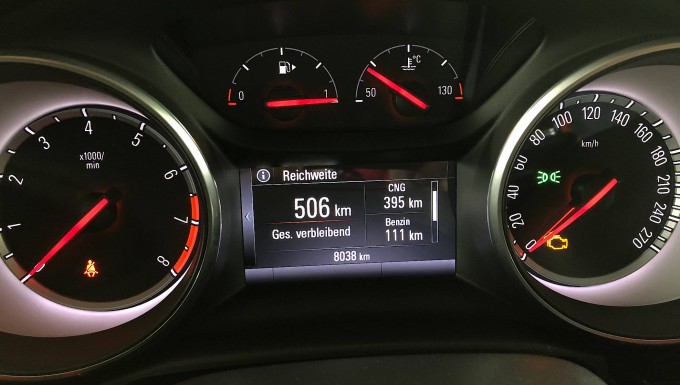V W golf or Opel astra ? Who asks this question for a new natural gas vehicle, must necessarily know a difference: The natural gas Golf 1.4 TGI bivalent, the natural gas Astra 1.4 CNG monovalent. In the Golf, the 50-liter gas tank remains unchanged, the second tank for natural gas holds 15 kilograms. The Astra, on the other hand, is entirely geared to natural gas, with up to 19 kilograms on board. The fuel tank in turn shrinks to the format of a larger reserve can with 13 liters.
![]()
The concept of Opel has two advantages: Finally, the natural gas range is practicable, you do not constantly drive to the gas station. On the other hand, the trunk volume is only reduced by 129 liters to 241 liters, it lacks the underbody compartment. However, the disadvantage of the monovalent drive is also obvious. You have to drive natural gas, here the coercion rules. Natural gas filling stations are, however, just sown, in Germany 900 of a total of 15 000, and as a holiday destination for the natural gas Opel only Italy in question.
But who wants to save a lot with a gas car will drive anyway with this fuel alone. So probably the monovalent drive is thought. The natural gas Astra is only available in this one engine. The turbo gasoline engine provides (as in the Golf) 110 hp and delivers a torque of 200 Newton meters. This allows acceleration from 0 to 100 km / h in around eleven seconds. The six-speed manual transmission is mandatory, an automatic transmission and an automatic start-stop system are not offered for the natural gas Astra. Up to 160 km / h you can keep up in the highway traffic well, from 180 km / h every further acceleration is a test of patience, until finally the top speed of 200 km / h is reached. With a long run, we occasionally came to speedometer 220th The vote is rather sporty, road bumps are well felt.
Take the digital future into your own hands.
During the journey you are well informed about the fuel level in both tanks, the calculated range and the average fuel consumption. Opel has made a lot of effort here. When the fuel gauge shows the level of the natural gas tank, the display between tachometer and tachometer indicates that of the fuel tank – and vice versa. With a button you can switch between the two modes at any time, but, as I said, gasoline remains the reserve for all cases.
With an average consumption of 4.46 kilograms natural gas Reaches of around 430 kilometers have finally been created for 100 kilometers. That’s a win. The Golf TGI we had driven with an average consumption of 4.23 kilograms of natural gas, its natural gas supply was sufficient for 350 kilometers. With both vehicles, saving is an expensive affair. The alternative drive, the manufacturers pay well. The Opel Astra is only available in the model versions Edition and Innovation with natural gas drive. The basic prices are 25 000 and 27 000 euros, and the surcharge compared to the slightly stronger 1.4 Direct Injection Turbo with 125 hp is 3620 and 3355 euros. Compared with the weaker 1.0 Ecotec, which offers 105 hp, the surcharge is 4620 and 4355 euros.
Although you can at a cost of currently 1.11 € for a kilogram of natural gas to fill up the Astra for a favorable 21 euros. L-gas is cheaper, but also contains less energy. Nevertheless, the gas surcharge pays off only after 50,000 to 70,000 kilometers driven, unless the price of gas drops. Those who think about the environment may argue that the methane-containing natural gas can also be produced from renewable raw materials and biomass such as straw or green waste.
The CO2 emissions of the Astra 1.4 CNG are at 113 grams per kilometer, the 1.4 Direct Injection Turbo is at a slightly higher level, and the 1.0 Ecotec and the comparable 110 HP diesel engine naturally emit less.
